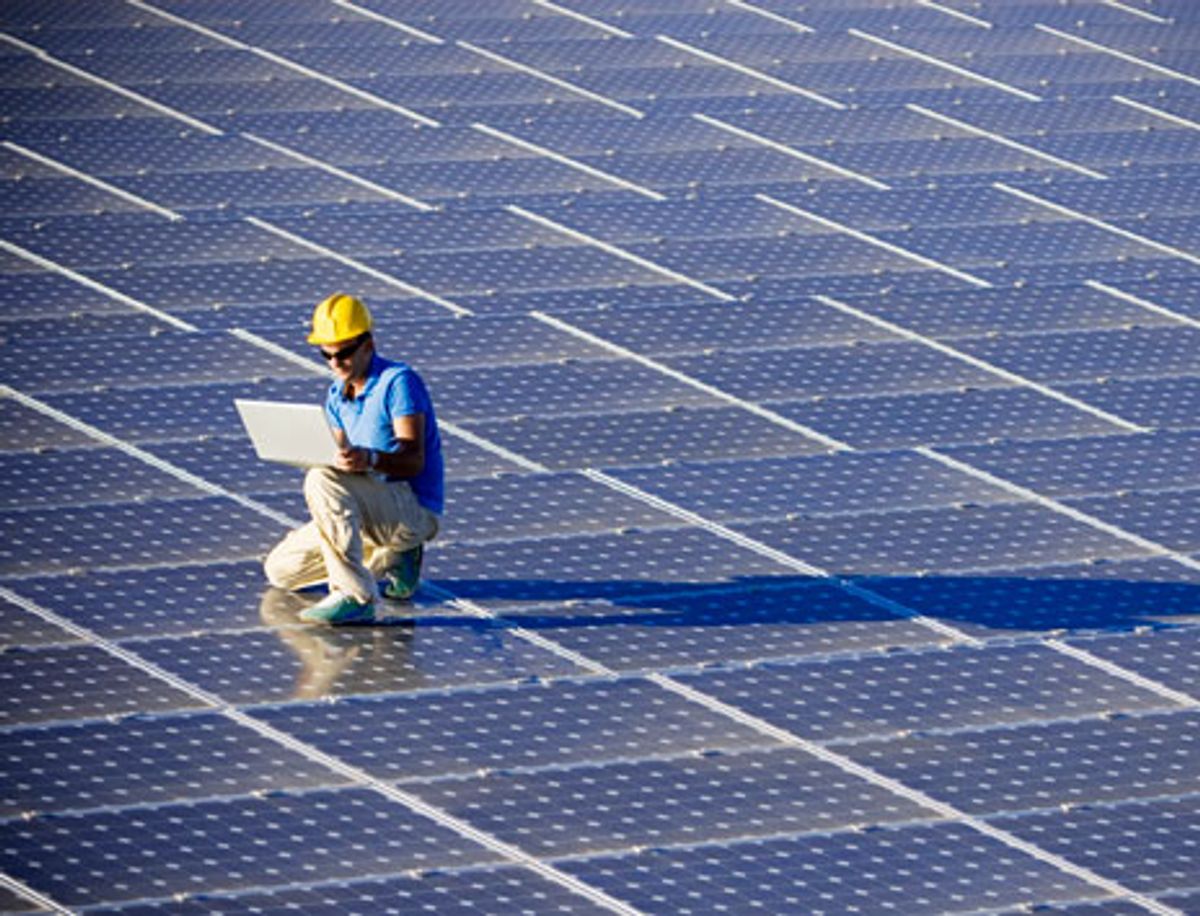The Financial Times reported recently that prices of polysilicon photovoltaic modules, the workhorse of the global solar industry, have dropped to below US $1.50 per watt. Three years ago they were about $3.50/W, and three years before that the total installed cost of PV (not just the module cost) more than $7.00/W--about seven times the cost of wind, which already then could be considered on the verge of economic viability. A solar price approaching $1.00/W would in theory make solar near-economic too and ought in principle bode very well for PV prospects.
But the polysilicon price cited by the FT reflects market forces of supply and demand that are powerfully influenced by government subsidies for both production and installation of PV arrays. The fact is, nobody has the slightest idea what the world price of polysilicon modules would be in the absence of subsidies.
The situation brings to mind something Warren Buffett once said to Ted Koppel, the creator and former anchorman of ABC's "Nightline." Describing the U.S. housing bubble many years before it burst, Buffett said it was as though in a small neighborhood everybody kept selling their houses to everybody else, so that the price of a house just kept going up and up and up. We wouldn't know what the real price of a house was until somebody moved out of the neighborhood and sold to an outsider, Bufftett told Koppel, sipping coffee in the Omaha diner where he liked to work.
Three years ago, First Solar got wide attention with its claim that it had come up with a thin-film production technology that enabled it to produce large PV arrays at a cost of $1.00/W. Though such arrays consume a lot of real estate and therefore cannot be directly compared to polysilicon modules in terms of costs and prices, the reported production cost naturally got very wide attention, because it seemed to be approaching economic equivalence with wind's. Inasmuch as wind had been the big story in power generation for the previous 15 years, solar equivalence—if it was truly equivalence—suggested photovoltaics might be the big story in the next 15.
Adding spice to that tempting concoction: First Solar's eccentric policy of not talking to the press, which made its thin-film technology something of a black box.
As noted here two weeks ago, very low Chinese prices for polysilicon have made life tough not just for standard PV manufacturers elsewhere but also for companies with competing technologies, such as First Solar. Today it was reported that First Solar will be unable to meet a Department of Energy deadline to qualify for a $1.9 billion loan guarantee for a California wind farm it's been developing and hopes to sell. Previously, First Solar had made known it was putting less emphasis on its novel thin-film technology and more on general solar project development.
Because of disconcerting news like that, the slew of recent PC bankruptcies, and general unease about solar prospects, First Solar's share price has dropped sharply in recent weeks, to the lowest level since April 2007.
It also was announced today, Sept. 23, that SolarCity will be unable to complete paperwork in time to obtain a $355 million DOE loan guarantee to support installation of PV generating systems in military housing on various bases. As a result, SolarCity will have to sharply cut back that program. The adverse development is attributed to a tightening of rule enforcement at DOE, because of Solyndra.



